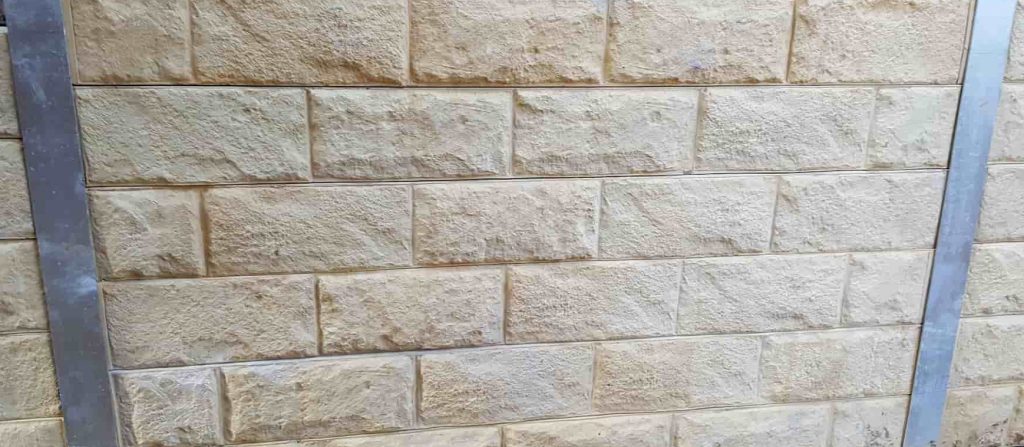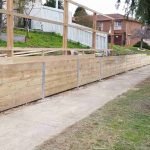Introduction
The construction market has actually gone through a seismic shift over the years, and one location that exemplifies this development is keeping wall construction. These structures are not merely functional; they embody engineering expertise, visual value, and environmental considerations. As we delve into the Retrospective: The Development of Methods worldwide of Retaining Wall Construction, we will check out numerous methods and products made use of over time, highlighting how they have actually formed contemporary practices in landscaping and civil engineering.
Retrospective: The Evolution of Techniques in the World of Retaining Wall Construction
When we think about maintaining walls, it's easy to neglect their abundant history and significance. From ancient civilizations that built fundamental stone walls to today's advanced systems using concrete sleepers and H-beams, retaining walls have actually been essential for managing soil erosion, water drain, and producing functional arrive on slopes.
The Historic Context of Keeping Walls
Historically, keeping walls date back thousands of years. The Romans were leaders in this field, building huge stone walls that still stand today. These early structures were designed to keep back earth or support terraces for agriculture-- showcasing a blend of functionality and artistry.

Materials Utilized Over Time
The option of materials has considerably influenced the effectiveness and efficiency of retaining wall building and construction. Let's take a closer look at some essential products that have actually been used:
- Stone: Natural stone was among the earliest materials used. Its resilience made it perfect for ancient constructions. Timber: Wood sleepers began to gain popularity due to their availability and ease of use. Concrete: With industrial advancements came concrete sleeper walls-- providing strength and versatility. H-beams: Steel H-beams revolutionized the industry by providing robust structural assistance for taller walls.
Each material has its advantages and downsides, affecting cost, upkeep requirements, and visual appeal.
The Function of a Retaining Wall Installer
A skilled retaining wall installer plays an integral role in guaranteeing that these structures are not just constructed for durability but also satisfy regional guidelines and safety standards. Their knowledge incorporates knowledge about:
Site assessment Material selection Structural integrityBy picking a qualified expert, property owners can ensure their investment is sound from the very start.

Modern Methods in Retaining Wall Construction
With evolving technology comes fine-tuned strategies in building and construction. Here are some modern approaches improving how we approach keeping wall design:
1. Modular Block Systems
These pre-made blocks enable fast installation while keeping visual variety.
2. Geogrid Reinforcement
Using geosynthetic products helps disperse loads more equally across the wall structure.
3. Gravity Walls
Utilizing weight alone to resist moving deals simplicity without jeopardizing stability.
4. Cantilever Walls
These utilize balance with less material use-- a smart design option for lots of builders.
Innovative Products Shaping Present-Day Practices
Beyond conventional choices like stone and wood sleepings, innovative materials are changing the landscape:
- Reinforced Concrete: Enhancing durability while reducing maintenance. Green Walls: Integrating greenery into designs provides both appeal and erosion control.
The Significance of Drainage Systems
No matter how robust a retaining wall is constructed, incorrect drainage can lead to catastrophic failures. A thorough drainage plan includes:
Weep holes Drainage pipes Gravel backfillThese elements collaborate to relieve hydrostatic pressure behind the wall-- making sure stability over time.
Challenges Faced by Retaining Wall Specialists Today
Every period brings its difficulties; today's retaining wall contractors must navigate concerns such as:
- Environmental regulations Supply chain constraints Evolving structure codes
Their flexibility ensures they stay competitive in a quickly altering market.
FAQs
1. What is a retaining wall?
A keeping wall is a structure developed to keep back soil or prevent erosion on sloped terrains.
2. What products can I use for my maintaining wall?
You can choose from a number of materials consisting of stone, concrete sleepers, wood sleepers (lumber), or steel H-beams based upon your budget and visual preference.
3. How deep must my foundation be?
The depth mainly depends upon your local soil conditions however normally varies from 12 inches to 36 inches for optimal stability.
4. Can I build a keeping wall myself?
While DIY tasks are tempting, employing knowledgeable experts makes sure compliance with local codes and structural stability-- conserving you headaches down the line.
5. What prevail signs of failure in keeping walls?
Cracks, bulging soil behind the wall, or leaning structures indicate potential https://tuffstuffretainingwalls.com.au/ failure requiring instant attention from experts.
6. How typically ought to I keep my keeping wall?
Regular assessments at least as soon as a year can assist recognize minor problems before they intensify into pricey repairs.
Conclusion
In summary, as we review this Retrospective: The Development of Techniques in the World of Retaining Wall Construction, it becomes evident that each phase has contributed distinctively to what we know today as efficient retaining services for various surfaces and landscapes. From ancient stone building and constructions to modern engineered systems using innovative materials like concrete sleepers or steel H-beams, it's clear that innovation continues to drive this field forward while guaranteeing security standards are satisfied efficiently by knowledgeable retaining wall builders and contractors
Whether you're looking to construct your first garden balcony or construct a substantial industrial job requiring substantial earth retention abilities, comprehending these evolutionary methods arms you with knowledge critical for making informed choices about your construction requires moving forward.
This article serves as simply an overview offered limitations on length; however, each section could be considerably broadened upon for an extended read towards 6000 words! If you require further sections fleshed out or additional topics covered concerning particular strategies or case research studies within maintaining walls construction history or practices do not hesitate to ask!